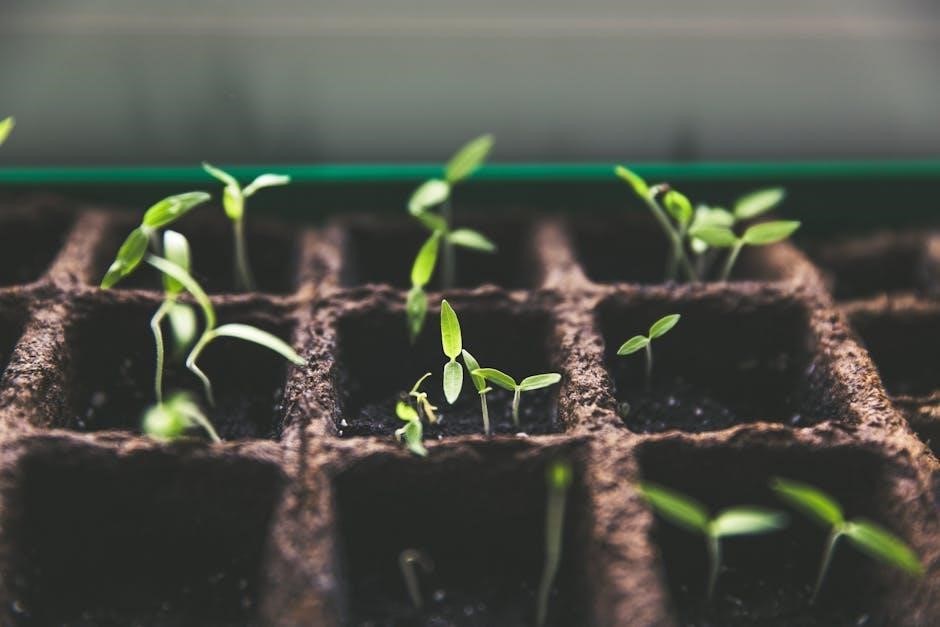This guide helps gardeners in USDA Zone 7b navigate the region’s moderate climate‚ with warm summers and cool winters‚ to optimize plant growth and selection throughout the year.
Overview of USDA Hardiness Zone 7b
USDA Hardiness Zone 7b is characterized by minimum winter temperatures between 5°F and 10°F (-15°C to -12.2°C). This zone experiences warm summers and cool winters‚ making it ideal for a wide variety of plants. It covers areas like Little Rock‚ Arkansas‚ and Griffin‚ Georgia‚ with a growing season of approximately 210 days. Gardeners in Zone 7b can grow vegetables‚ fruits‚ and flowers that thrive in its climate‚ benefiting from the moderate conditions that allow for multiple harvests throughout the year.
Importance of Understanding Your Planting Zone
Understanding your planting zone is crucial for successful gardening‚ as it determines which plants can survive and thrive in your local climate. Zone 7b’s specific temperature ranges and frost dates guide planting schedules‚ ensuring optimal growth. By aligning plant selection with zone-specific conditions‚ gardeners reduce risks of frost damage and improve yields. This knowledge also helps in choosing plants that suit seasonal variations‚ maximizing the garden’s productivity and beauty throughout the year.
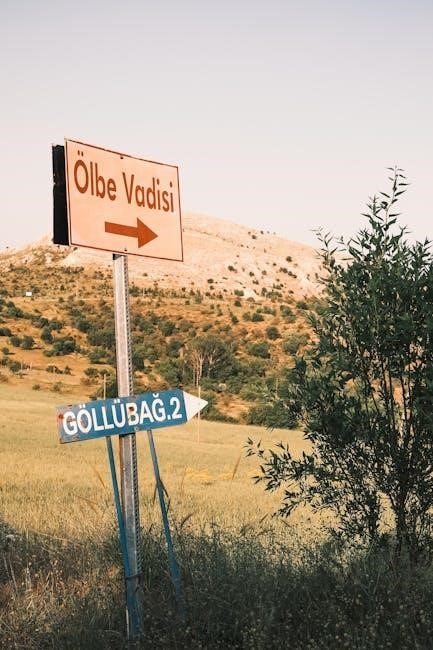
Frost Dates and Growing Season
Zone 7b experiences a moderate climate‚ with the last spring frost typically occurring in mid-April and the first fall frost in mid-November‚ allowing a 210-day growing season.
Last Spring Frost Date in Zone 7b
In Zone 7b‚ the last spring frost date typically falls between April 5th and April 15th. This marks the end of winter’s cold snaps‚ signaling the safe start for planting warm-season crops outdoors. Gardeners should wait until after this date to ensure soil has warmed sufficiently and frost damage is no longer a risk. This timeline allows for optimal growth of tender plants like tomatoes and peppers‚ which thrive in Zone 7b’s climate.
First Fall Frost Date in Zone 7b
The first fall frost date in Zone 7b generally occurs between November 5th and November 15th. This signals the end of the warm growing season‚ as temperatures drop below freezing‚ damaging or killing tender plants. Gardeners should prepare for this by harvesting remaining crops and protecting sensitive plants. The approximately 210-day growing season allows for multiple plantings‚ but the first frost marks the transition to cool-season crops or winter garden preparation. Planning around this date ensures a successful and prolonged gardening year in Zone 7b.
Length of the Growing Season
Zones 7b enjoys a moderate to long growing season‚ typically spanning about 210 days. This extended period allows gardeners to cultivate a wide variety of plants‚ including cool- and warm-season crops. The season begins after the last spring frost in April and ends with the first fall frost in November. This duration provides ample time for multiple harvests‚ making Zone 7b ideal for diverse gardening strategies. By understanding and utilizing this timeframe‚ gardeners can maximize yields and enjoy a bountiful garden throughout the year.

Best Vegetables for Zone 7b
Zones 7b’s moderate climate supports a wide range of vegetables‚ including broccoli‚ spinach‚ carrots‚ and tomatoes. The extended growing season allows for multiple harvests‚ ensuring a productive garden year-round.
Spring Vegetables
Zone 7b gardeners can enjoy a variety of spring vegetables‚ thriving in cooler weather. Broccoli‚ spinach‚ carrots‚ beets‚ lettuce‚ and peas are ideal choices. Plant these as soon as the soil can be worked‚ typically 4-6 weeks before the last frost date. Root crops like radishes and turnips grow quickly‚ while leafy greens like kale and Swiss chard prefer the mild spring temperatures. Start seeds for tomatoes and peppers indoors 6-8 weeks before the last frost for an early start. Spring is also perfect for planting onion sets and potatoes. Plan accordingly to maximize the growing season.
Summer Vegetables
Zone 7b’s warm summers are ideal for growing a wide variety of summer vegetables. Tomatoes‚ peppers‚ cucumbers‚ zucchini‚ and eggplants thrive in the region’s heat. Plant heat-tolerant varieties to ensure success. Start seeds for summer crops like okra and squash indoors 2-3 weeks before the last frost date. Corn and beans also excel in Zone 7b’s climate. Ensure ample sunlight and water‚ especially during dry spells. Companion planting can enhance growth‚ and rotating crops helps maintain soil health. Summer is the peak season for productivity in Zone 7b gardens.
Fall Vegetables
Zone 7b’s cooler fall season is perfect for growing a variety of vegetables. Broccoli‚ kale‚ spinach‚ carrots‚ beets‚ and radishes thrive in the region’s mild autumn temperatures. Plant these crops about 8 weeks before the first frost date to allow them to mature. Fall vegetables prefer cooler weather and can tolerate light frosts. Incorporate compost to enrich the soil‚ and choose varieties with shorter maturation periods to maximize the harvest. Proper spacing and consistent watering ensure healthy growth‚ making fall a productive season for Zone 7b gardens.
Winter Vegetables
Zone 7b’s mild winters allow for a selection of cold-hardy vegetables to thrive. Root crops like turnips‚ rutabagas‚ and radishes can be planted in late fall for winter harvest. Spinach‚ kale‚ and collards also perform well‚ tolerating light frosts. Plant these in early fall to establish before colder months. Using cold frames or row covers extends the growing season‚ protecting plants from harsher conditions. With proper planning‚ Zone 7b gardeners can enjoy fresh‚ nutritious winter vegetables‚ adding variety to their year-round harvest.
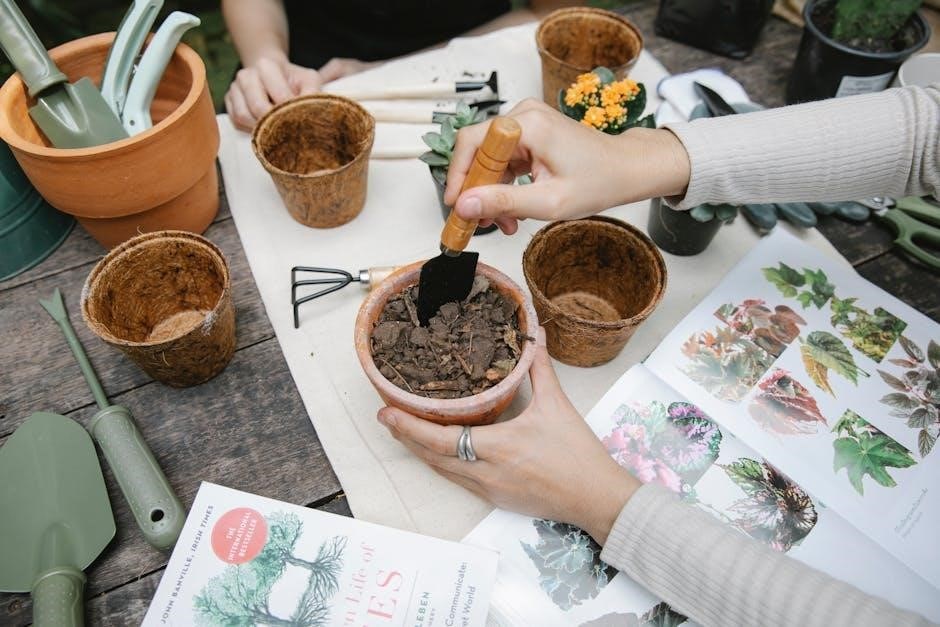
Fruit Trees and Bushes Suitable for Zone 7b
Zone 7b’s moderate climate supports a variety of fruit trees and bushes‚ including apple‚ peach‚ and pear trees‚ as well as blueberries and raspberries‚ which thrive in its conditions.
Best Fruit Trees for Zone 7b
Zone 7b’s climate supports an array of fruit trees‚ including apple‚ peach‚ and pear trees‚ which thrive in its moderate winters and warm summers. Fig and persimmon trees also excel‚ tolerating the zone’s conditions. Dwarf varieties are ideal for smaller spaces‚ while cherry and plum trees provide abundant harvests. Proper soil preparation and sunlight are key for success. These trees are well-suited to Zone 7b’s temperatures and growing season‚ ensuring fruitful and vibrant gardens.
Best Berry Bushes for Zone 7b
Zone 7b is ideal for growing a variety of berry bushes‚ including blueberries‚ raspberries‚ strawberries‚ and blackberries. These bushes thrive in the zone’s moderate climate and soil conditions. Popular varieties like ‘Tophat’ blueberries and ‘Summit’ raspberries are known for their productivity and flavor. Planting in well-draining‚ acidic soil (for blueberries) and ensuring full sun will promote healthy growth. Regular watering and mulching are essential for optimal berry production‚ making these bushes a rewarding addition to any Zone 7b garden.
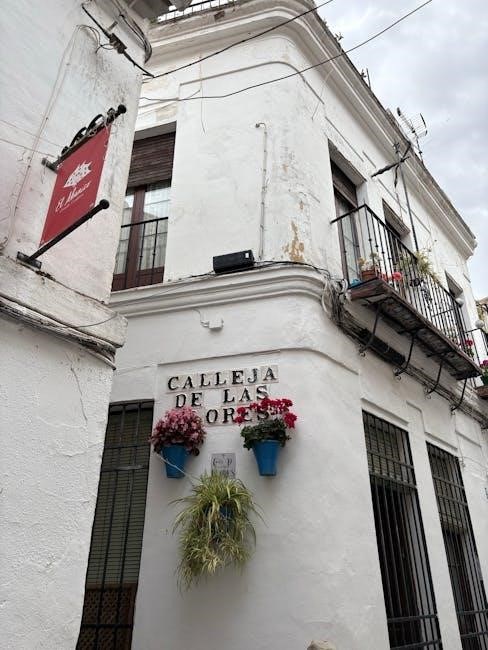
Flowers for Zone 7b
Zone 7b’s moderate climate supports a wide variety of flowers‚ including annuals like marigolds and zinnias‚ and perennials such as black-eyed Susans and coneflowers‚ ensuring vibrant blooms throughout the growing season.
Annual Flowers
Annual flowers are a vibrant addition to Zone 7b gardens‚ offering colorful blooms that last a single growing season. Popular choices include marigolds‚ zinnias‚ petunias‚ and sunflowers‚ which thrive in the region’s warm summers. These flowers typically germinate quickly and require minimal care. Plant seeds or seedlings after the last spring frost for optimal growth. Most annuals prefer full sun and well-drained soil. Regular watering and deadheading can extend their blooming period. Annuals are perfect for adding temporary beauty to containers‚ beds‚ or borders‚ ensuring a dynamic display throughout the season.
Perennial Flowers
Perennial flowers are ideal for Zone 7b gardens‚ offering year-round beauty with minimal maintenance. Popular choices include black-eyed Susans‚ daylilies‚ and coneflowers‚ which thrive in the region’s warm summers and cool winters. These flowers return annually‚ often naturalizing over time. Plant them in well-drained soil and full sun for optimal blooms. Water regularly during their first growing season to establish strong roots. Perennials provide lasting color and attract pollinators‚ making them a sustainable choice for vibrant‚ low-maintenance gardens in Zone 7b.
Bulbs for Zone 7b
Zone 7b offers ideal conditions for growing a variety of bulbs‚ which add vibrant color and texture to gardens. Popular choices include daffodils‚ tulips‚ and hyacinths‚ which thrive in the regions moderate climate. Plant bulbs in well-drained soil during fall or early spring for optimal growth. Ensure bulbs are planted at the correct depth and watered regularly during their first growing season. Many bulbs naturalize over time‚ creating stunning displays year after year. They also attract pollinators and require minimal maintenance‚ making them a great addition to any Zone 7b garden.

Herbs for Zone 7b
Zone 7b supports a variety of herbs‚ including basil‚ rosemary‚ and thyme. Plant annual and perennial herbs in well-drained soil with ample sunlight for optimal growth and flavor.
Annual Herbs
Annual herbs like basil‚ dill‚ and cilantro thrive in Zone 7b’s climate. Plant them in spring after the last frost or in early fall for a second crop. Choose well-drained soil with full sun. Add organic matter for better growth. Regular watering and pruning promote healthy foliage. These herbs add fresh flavor to dishes and can be harvested throughout the growing season. Incorporate them into your garden for a vibrant and aromatic addition to your culinary creations.
Perennial Herbs
Perennial herbs such as rosemary‚ thyme‚ and oregano are ideal for Zone 7b gardens. These herbs are resilient to the region’s cool winters and thrive in well-drained soil with full sun. Plant them in early spring or fall for optimal growth. Regular pruning helps maintain their health and encourages bushy growth. Mint and sage are also excellent choices‚ though mint should be contained to prevent spreading. These perennials provide fresh flavors year after year‚ making them a valuable addition to any kitchen garden.
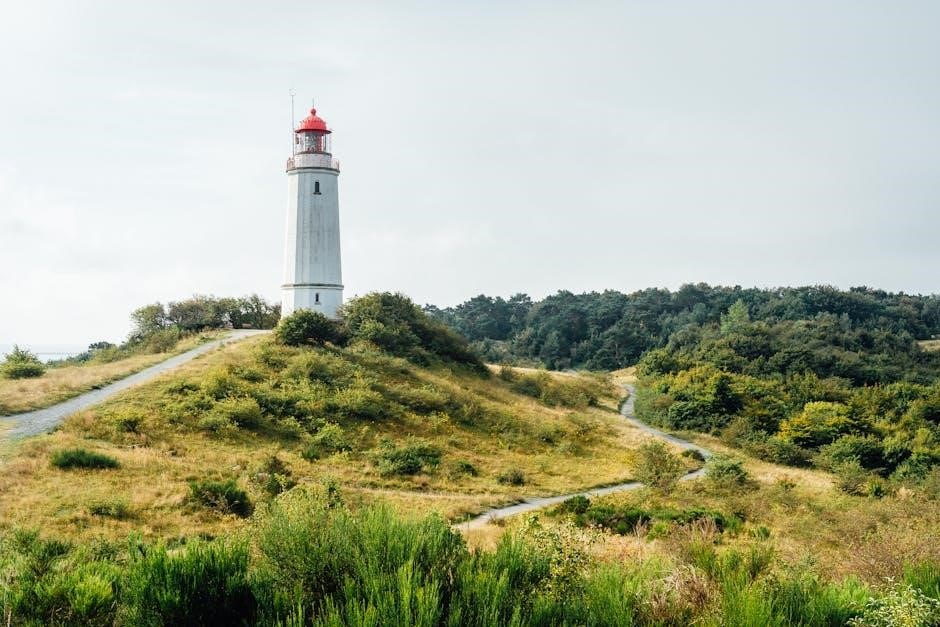
Native Plants for Zone 7b
Native plants for Zone 7b are perfectly adapted to the region’s climate‚ requiring minimal care and providing vibrant blooms. They attract pollinators and support local biodiversity‚ ensuring resilience and beauty in your garden.
Native Wildflowers
Native wildflowers in Zone 7b are ideal for low-maintenance gardens‚ offering vibrant blooms and attracting pollinators. Species like Black-eyed Susan and Butterfly Weed thrive in the region’s climate. These wildflowers are adapted to local soil and weather conditions‚ requiring less care than non-native plants. They also support biodiversity by providing habitats for bees‚ butterflies‚ and birds. Planting native wildflowers promotes a sustainable and resilient garden ecosystem. Choose varieties like Purple Coneflower or Coreopsis for stunning‚ drought-tolerant displays that bloom throughout the growing season.
Native Grasses
Native grasses like Little Bluestem and Indiangrass are well-suited for Zone 7b‚ offering resilience to the region’s climate. These grasses are drought-tolerant and require minimal maintenance‚ making them ideal for sustainable landscaping. They stabilize soil‚ prevent erosion‚ and provide habitat for wildlife. Native grasses also attract pollinators and add natural beauty to gardens with their subtle textures and seasonal color changes. Planting them supports local ecosystems and ensures a low-maintenance‚ environmentally friendly garden; They thrive in Zone 7b’s warm summers and cool winters‚ blending seamlessly into the natural landscape.
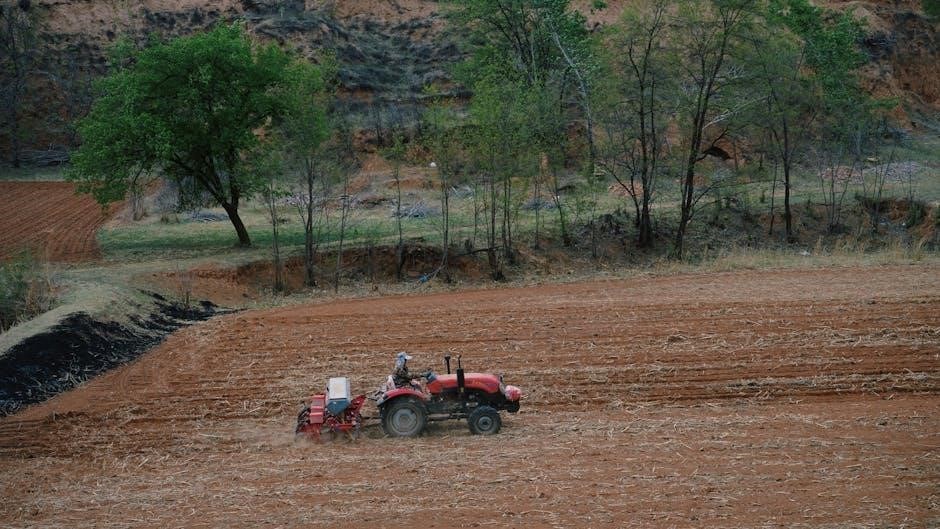
Soil Preparation and Care
Proper soil preparation is crucial for gardening success in Zone 7b. Test and amend soil to ensure optimal pH levels‚ fertility‚ and structure‚ promoting healthy plant growth.
Understanding Your Soil Type
Identifying your soil type is essential for successful gardening in Zone 7b. Common soil types include clay‚ silt‚ loam‚ and sandy soils‚ each with unique water retention and drainage properties. Clay soils hold moisture but drain slowly‚ while sandy soils drain quickly but lack water retention. Loam‚ a balanced mix‚ is ideal for most plants. Testing your soil helps determine its pH and nutrient content‚ guiding amendments like compost or fertilizers. Understanding your soil structure and composition ensures proper root development and water management‚ leading to healthier plants and higher yields in Zone 7b gardens.
Improving Soil Fertility
Enhancing soil fertility in Zone 7b involves adding organic matter like compost‚ well-rotted manure‚ or mulch to enrich nutrient levels. These amendments improve soil structure‚ water retention‚ and microbial activity‚ benefiting plant growth. Avoid overusing synthetic fertilizers‚ as they can deplete soil health. Incorporate cover crops to replenish nutrients and prevent erosion. Periodically test soil to identify deficiencies and adjust amendments accordingly. Balancing soil fertility ensures robust plant development and sustainable gardening success in Zone 7b’s climate.
Optimal pH Levels for Zone 7b Plants
The optimal pH for plants in Zone 7b typically ranges between 6.0 and 7.0‚ favoring slightly acidic to neutral soils. Most vegetables and flowers thrive in this range‚ while specific plants like blueberries may require more acidic conditions. Regular soil testing is essential to determine current pH levels. Adjustments can be made using lime to raise pH or sulfur/peat moss to lower it. Incorporating organic matter improves soil health and helps maintain optimal pH‚ ensuring robust plant growth in Zone 7b’s climate.

Garden Maintenance Tips
Regular watering‚ mulching‚ and fertilizing are essential for Zone 7b gardens. Prune plants seasonally and monitor for pests or diseases. Use a gardening calendar to track tasks.
Watering Strategies
Proper watering is crucial for Zone 7b gardens. Assess soil moisture by checking the top 6 inches of soil. Use mulch to retain moisture and reduce evaporation. Apply deep watering once or twice weekly during dry spells‚ focusing on root zones. Incorporate drip irrigation or soaker hoses for efficiency. Avoid overhead watering to minimize disease risks. Adjust watering schedules seasonally‚ ensuring plants receive adequate moisture during summer heat and reducing water in cooler months to prevent root rot. Consistent hydration supports healthy growth and maximizes yields in Zone 7b gardens.
Pest and Disease Management
Effective pest and disease management is essential for a thriving Zone 7b garden. Monitor plants regularly for signs of pests like aphids‚ slugs‚ and caterpillars. Use organic controls such as neem oil‚ insecticidal soap‚ or hand-picking. Encourage beneficial insects like ladybugs and lacewings. Prevent diseases by removing infected plants‚ improving air circulation‚ and avoiding overhead watering. Rotate crops annually to break pest and disease life cycles. Apply fungicides as a last resort. Maintain clean garden tools and soil to reduce contamination risks. Healthy plants are naturally more resistant to pests and diseases‚ ensuring a robust harvest.
Companion Planting
Companion planting is a strategic way to enhance garden health in Zone 7b. Pairing plants like marigolds with tomatoes deters pests‚ while basil improves flavor and repels insects. Nasturtiums benefit cabbage by attracting aphid-eating insects. Planting herbs like rosemary near carrots or sage with strawberries boosts growth and flavor. Some plants‚ such as fennel‚ should be separated as they inhibit others. This method promotes biodiversity‚ reduces pests‚ and maximizes space‚ creating a balanced and thriving garden ecosystem tailored to Zone 7b’s climate conditions.

Seasonal Gardening Tips
Adapt your gardening strategies to Zone 7b’s distinct seasons. Plant cool-season crops in fall‚ prepare soil in winter‚ and optimize planting schedules for spring and summer growth.
Spring Gardening Tips
In Zone 7b‚ spring gardening begins after the last frost date‚ typically mid-April. Start seeds indoors in March for early transplants. Focus on cool-season crops like broccoli‚ spinach‚ and lettuce. Prepare soil by testing pH levels and amending with compost or manure. Plant bulbs and perennials as soon as the ground thaws. Water consistently but avoid over-saturating. Mulch around plants to retain moisture and suppress weeds. Divide and replant perennials if necessary. Plan for a mix of annuals and perennials to ensure vibrant color throughout the season. Monitor for pests and diseases early to prevent issues.
Summer Gardening Tips
In Zone 7b‚ summer gardening focuses on heat tolerance and moisture management. Water plants deeply but avoid overwatering‚ as the warm climate can lead to root rot. Mulch around plants to retain soil moisture and suppress weeds. Fertilize warm-season crops like tomatoes and peppers regularly to promote healthy growth. Provide shade for sensitive plants during peak sun hours to prevent scorching. Keep an eye out for pests like aphids and hornworms‚ using organic controls when necessary. Prune flowering plants to encourage continuous blooms and maintain plant health. Monitor soil pH levels to ensure optimal nutrient uptake.
Fall Gardening Tips
In Zone 7b‚ fall gardening involves preparing for cooler weather and extending the growing season. Clean up the garden by removing dead or diseased plants to prevent pests. Test and amend soil as needed to improve fertility for fall crops. Plant cool-season vegetables like broccoli‚ kale‚ and spinach‚ which thrive in cooler temperatures. Divide and replant perennials to maintain health and vigor. Apply mulch to retain soil moisture and regulate temperature. Compost leftover garden debris to enrich next year’s soil. Plan ahead by listing successes and challenges to refine your gardening strategy for the upcoming year.
Winter Gardening Tips
In Zone 7b‚ winter gardening focuses on protecting plants and preparing for spring. Use frost blankets or covers to shield sensitive plants from cold snaps. Plant winter-hardy vegetables like kale‚ spinach‚ and Brussels sprouts‚ which tolerate light frosts. Prune dormant shrubs and fruit trees to promote healthy growth. Apply mulch to retain soil moisture and regulate temperature. Check for pests and diseases‚ as some remain active in mild winters. Protect potted plants by moving them indoors or to sheltered areas. Review last season’s performance and plan improvements for the upcoming year. Compost kitchen scraps to enrich soil for spring planting.
Gardening in Zone 7b offers a rewarding experience with its moderate climate and long growing season‚ allowing for diverse plant selections and bountiful harvests throughout the year.
Final Thoughts on Zone 7b Gardening
Gardening in Zone 7b is highly rewarding due to its moderate climate‚ offering a long growing season ideal for various plants. By understanding frost dates‚ soil conditions‚ and plant requirements‚ gardeners can maximize their efforts. Proper planning‚ including starting seeds indoors and transplanting at the right time‚ ensures a successful harvest. Regular maintenance‚ such as watering and pest management‚ further enhances results. With the right strategies‚ Zone 7b gardeners can enjoy a vibrant and productive garden year-round‚ reaping the benefits of their labor with abundant yields and beauty.
